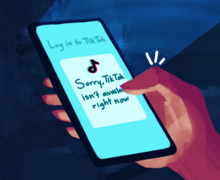College basketball players deserve freedom to transfer and play right away
Paul Schlesinger | Asst. Photo Editor
Geno Thorpe wouldn't be eligible to play for Syracuse this season if he wasn't a graduate-transfer.
Elijah Hughes wanted to move closer to his Beacon, New York, home and play for a Power 5 program, so in May he transferred from East Carolina to Syracuse. But Hughes, a long, athletic guard perfect for the top of the 2-3 zone, will have to sit out this year due to NCAA transfer rules.
Transfers like Hughes should be eligible to play immediately upon full-time enrollment at the beginning of the quarter or semester of the next full season. The current NCAA rules, which state undergraduate transfers cannot be immediately eligible, miss the very point on which the NCAA hinges.
In September, the NCAA announced it was considering a proposal to allow athletes who meet an as-yet-undecided academic standard to play immediately upon transferring to a new school. It sparked discourse, with many coaches fearing that the new rule would create a free agency-like chaos and only make transferring more common.
“It would be the worst rule ever,” Baylor head coach Scott Drew told ESPN.
It “would cripple teams and programs,” Indiana coach Archie Miller told Scout.com.
“I don’t think it’s a helpful rule,” SU head coach Jim Boeheim said this week. “Instead of 700 transfers, you’ll get about 1,500 transfers.”
Coaches want to manage their assets, who contribute to their job security and winning percentages. The NCAA prides itself on the fact that athletes are students first. It coined the term “student-athlete” in the 1950s and has stuck by it ever since, spraying the phrase throughout press releases and featuring it prominently on NCAA.org.
Yet nonathletes can transfer all they want and coaches can bump from school to school as they please. What makes players — who in the eyes of the NCAA just happen to be students who play a sport — any different? The most valuable athletes in a college’s enrollment have the least freedom. They have no leverage under the current rule.

Andy Mendes | Digital Design Editor
If one argues big-time college athletes are not like normal students, that’s a different issue. Then the NCAA needs to reevaluate why it calls athletes, “student-athletes.”
Sure, without having to sit out a year, the number of transfers would increase. Boeheim is right. Rosters would change from year to year. Coaches would sometimes be left scrambling for players. Players may join forces in hopes of NCAA Tournament runs. Players who anticipate they won’t play for a school will transfer out.
“To not sit out, I think it would be crazy,” said Syracuse redshirt freshman forward Matthew Moyer. “Dudes would be going all which ways, transferring two or three times in their college career. I think the one-year block makes it so it’s a serious reason, not so you want to team up with anybody.”
So what? Players transfer for myriad reasons, many of which are out of their control. They deserve the freedom to transfer, whether to move closer to home, get more playing time or play for a different coach. Athletes can’t predict coaching changes, nor can they foresee getting less playing time than promised. In 2015, SU graduate transfer Geno Thorpe felt he had to transfer out of the Power 5 at Penn State because he did not get the playing time he was promised when recruited, his father, Gene, said.
Players don’t go to college intending to transfer, but teenagers are bound to make poor decisions. Highly touted high school players are faced with a much-too-early recruitment cycle to commit earlier and earlier. They may make rash decisions.
“The rule would be good for guys who want to change scenery,” said junior center Paschal Chukwu, who transferred from Providence in 2015 and sat out the 2015-16 season at SU. “They can just go and play. It’s a positive.”
Graduate transfers like Thorpe are immediately eligible, and the game has not suffered from it. If the NCAA really wants to stick by its emphasis of “student-athlete,” it should at least provide all players the same chance their classmates have. If players meet the academic requirement, they should be allowed to transfer and play the next full season.
After all, they are students first.
Matthew Gutierrez is a senior staff writer at The Daily Orange, where his column appears occasionally. He can be reached at mguti100@syr.edu and on Twitter @Matthewgut21.
Published on November 8, 2017 at 10:37 pm





